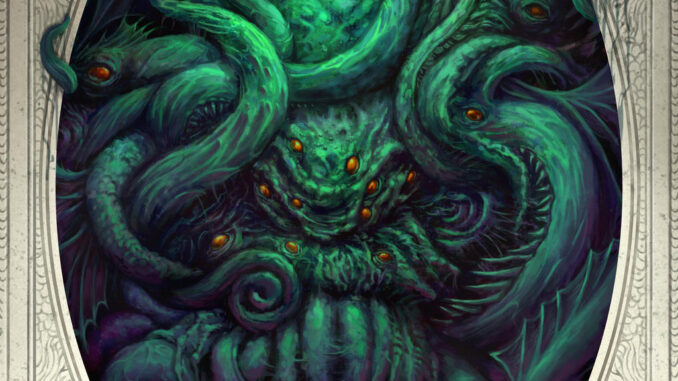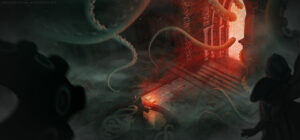
 In the Malleus Monstrorum, several pages are dedicated to creating original deities to use in your Call of Cthulhu campaign. Enough tales have been told about Nyarlathotep and Cthulhu that there isn’t much left to the imagination when introducing cults who worship these gods. We know Nyarlathotep’s trickster motives and many masks. We know that Cthulhu is dead, but not dead the way we know it, deep beneath the ocean. To truly surprise experienced Cthulhu players, it might be time to homebrew a new deity and its legion of followers.
In the Malleus Monstrorum, several pages are dedicated to creating original deities to use in your Call of Cthulhu campaign. Enough tales have been told about Nyarlathotep and Cthulhu that there isn’t much left to the imagination when introducing cults who worship these gods. We know Nyarlathotep’s trickster motives and many masks. We know that Cthulhu is dead, but not dead the way we know it, deep beneath the ocean. To truly surprise experienced Cthulhu players, it might be time to homebrew a new deity and its legion of followers.
The first set of advice is the same as Sly Flourish gives for creating new monsters in Dungeons and Dragons: reskin an existing deity. There’s almost a hundred gods in the second volume of the Malleus Monstrorum. There must be something that matches the physical specifications of your imagined deity. Copy the stats and focus on the important stuff: what the god looks like, what the god wants and how it communicates with its cultists.
Before we get too far away from stats, I think it’s funny to point out the stats for the deities lack an Intelligence statistic. As the Malleus Monstrorum points out, a god is only as smart as the Keeper portraying the god. It’s a futile exercise to determine how intelligent a god is.
Then, it’s up to us to determine what the god is about. Is it a trickster, a conqueror, a creature that thrives on being adored, a deity in need of a mate, or is it trapped and hungers to be set free upon the universe? That last question leads into the next step: determining what limits the god. Why doesn’t it just manifest on the world and plunder away? Is it cursed, warded against or imprisoned? Like Cthulhu, is it dead and waiting for the stars to properly align before it can arise?
Then we get to the deity’s motives. What does it want? Is it hungering to feast on the living? Is it determined to kill other gods? Does it want to rule the world? The universe?
Then we get to the god’s social habits. Who does it associate itself with? Great Cthulhu communicated through dreams to the artistic whose minds were proper to receive the god’s messages. Does it communicate with people who have physically visited places that are spiritually important to the god? Is it determined by fate? The first child born after a solar eclipse is destined to be a harbinger of a god?
What does the god say? Are there promises? Are they real or fake? Is it just a wave of awe-inspiring fear that motivates its followers? Are there missions or tasks the recipient of the messages must do to pave the way for the coming of the god? Are these messages properly understood, or is it a mish-mash of ideas that leads to a caper that doesn’t actually further the god’s motives?
Do these messengers of the gods gain special abilities? Can they sprout wings and fly? Can they see in the dark? Are they instantly masters of dark sorcery? Are they aided by creatures of the Mythos? What makes these messengers formidable opponents for the investigators?
The Malleus Monstrorum continues by suggesting using the Size statistic to determine the size of the deity. Is it twice the size of a human or nine times the size of a human? Is the creature armored? There’s a limit to armor where investigators will have no chance to harm the god. That might be the intention. While speaking about armor, let’s talk about Power. This determines how effective the god is in a battle of spells. It might be impossible to wither the limb of a god, but it might be very easy for the god to possess one of the investigators.
Finally, we get to attacks. Figure out how the creature attacks. Does it step on people? Does it whip tentacles around? The more attacks given to the creature, the less the damage should be. Wiping out an entire party with one round of attacks is not a satisfying way to end a campaign.
If all of this sounds like too much work to do, there are almost a hundred deities in the Malleus Monstrorum, so select a deity from the book that sounds cool and rename it using the Lovecraftian names on fantasynamegenerators.com.
